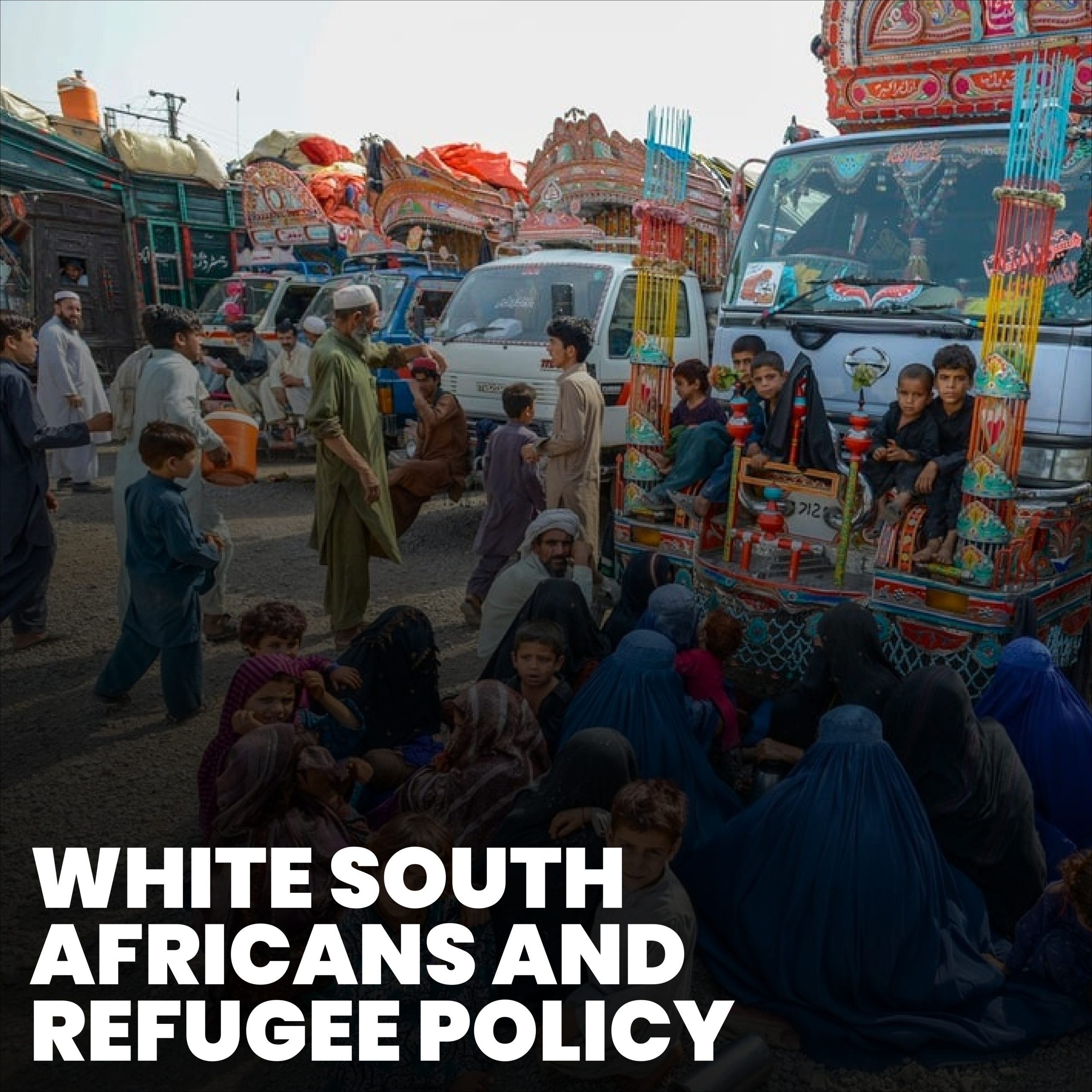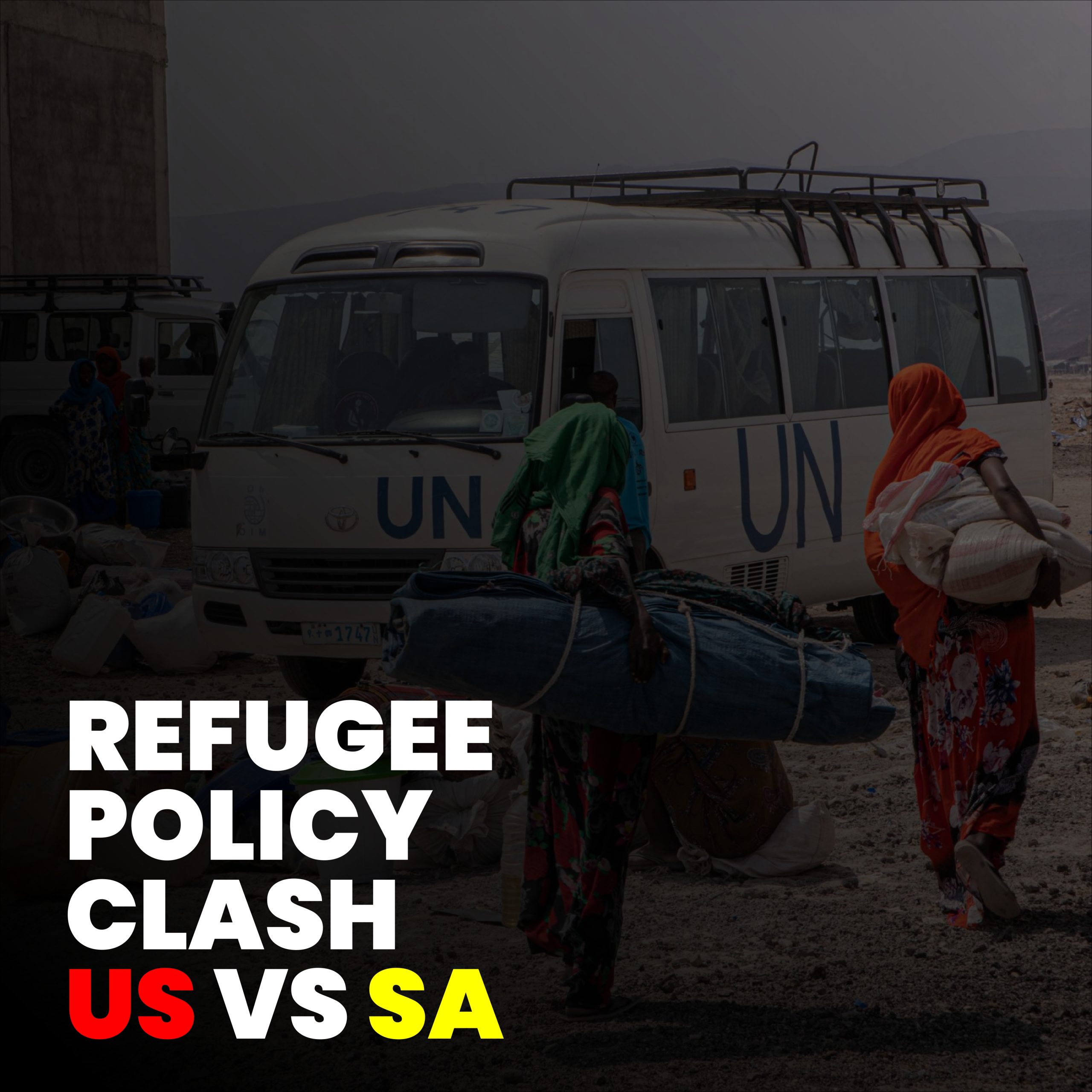White South Africans Introduction
White South Africans have unexpectedly become part of a global conversation about how nations define humanitarian protection. The U.S. government’s proposed refugee-admission limit for 2026—set at 7 500—has reignited arguments over who deserves priority and how race or politics influence resettlement decisions.
While officials say the cap reflects national-security and budget constraints, critics warn that it risks undermining the humanitarian principles that underpin refugee law. For South Africa and its citizens abroad, the debate has exposed a complicated mix of history, diplomacy, and perception.
White South Africans and America’s Refugee System
Every year the United States sets a ceiling on how many refugees it will accept. That number can shift widely depending on global events and domestic politics. White South Africans are rarely a defined category in that process, but their mention in policy discussions has sparked broader scrutiny.
Analysts point out that U.S. refugee admissions are guided by humanitarian-law standards, not ethnicity. Applications are reviewed through international-agency referrals and security screenings. The inclusion of any demographic label, critics say, blurs the line between humanitarian need and political messaging.
White South Africans in the Context of Historical Migration
Migration from South Africa to the United States is not new. White South Africans have moved abroad for decades, motivated by business opportunities, safety, or education. Most have done so through legal immigration channels rather than refugee programs.
Placing them in the refugee narrative, experts argue, reflects a broader misunderstanding of South Africa’s social dynamics. Crime and inequality affect communities of all races, and while rural violence remains a real concern, researchers caution against labeling it as racially targeted persecution.
White South Africans and International Reactions
When reports suggested that U.S. refugee priorities might mention South African applicants, the response from Pretoria was swift. South Africa’s foreign ministry reiterated that all citizens enjoy constitutional protection regardless of race.
International observers—from the UN Refugee Agency to human-rights NGOs—used the moment to emphasize that refugee protection should remain race-neutral. Their message was clear: humanitarian policy must rely on verified threat levels and international law, not domestic political symbolism.
White South Africans and Diplomatic Sensitivity
The issue quickly turned diplomatic. South Africa and the United States maintain strong trade and security ties through the African Growth and Opportunity Act and other agreements. Any perception that Washington is favoring or singling out white South Africans risks straining those relationships.
Both governments have since sought to calm tensions. U.S. officials clarified that the refugee cap applies globally and that individual cases will be reviewed through normal vetting procedures. Still, the public debate revealed how sensitive racial language can be in international policymaking.
White South Africans and U.S. Domestic Politics
Inside America, refugee policy often mirrors election-year politics. Advocates for a lower cap argue that the U.S. should prioritize border enforcement and internal security. Others believe reducing refugee intake contradicts the country’s humanitarian traditions.
White South Africans entered this discussion as a symbol rather than a large population group. Commentators note that referencing them appeals to certain political audiences but diverts attention from the wider challenge—millions of displaced people worldwide awaiting safe resettlement.
White South Africans and Media Framing
How the media frames complex stories strongly shapes public opinion. Headlines focusing on white South Africans and U.S. refugee policy can oversimplify nuanced realities. Analysts urge journalists to contextualize statistics and distinguish between asylum, refugee status, and general migration.
Balanced reporting can prevent misinformation and reduce racial polarization. It also reinforces that humanitarian systems exist to protect people based on danger and displacement—not demographic identity.
White South Africans and Humanitarian Principles
The core of the controversy returns to principle: what defines a refugee? International law sets strict criteria—fear of persecution for race, religion, nationality, political opinion, or group membership. For white South Africans, most legal experts say those thresholds rarely apply on a systemic scale.
Still, policymakers must assess every application individually. If credible evidence of targeted violence exists, protection may be granted. The challenge is balancing compassion with consistency, ensuring that decisions remain fair for all applicants, regardless of race.
White South Africans and Future Refugee Policy
The 7 500-person refugee ceiling is likely to evolve as global conflicts shift. Humanitarian organizations hope future administrations will restore higher admission levels. In that context, white South Africans represent one thread in a far larger tapestry of global displacement.
Rebuilding bipartisan trust in refugee policy may require separating moral responsibility from political symbolism. Transparent communication, predictable caps, and data-driven criteria can help restore faith in the system.
White South Africans and Ethical Implications
Beyond politics, the ethical conversation asks whether selective empathy undermines universal rights. Prioritizing or spotlighting one group—such as white South Africans—can unintentionally suggest that some lives merit faster rescue than others.
Academics warn that once racial or cultural preferences enter humanitarian frameworks, neutrality erodes. The best safeguard is to reaffirm that refugee protection serves individuals in verified danger, not political narratives or campaign strategies.
FAQs
1. Are white South Africans officially prioritized in U.S. refugee policy?
No formal policy confirms that; the U.S. State Department states that all refugee applications are judged on humanitarian criteria.
2. Why are white South Africans mentioned in debates about the 2026 refugee cap?
Their mention arose from political discussions and media reports questioning whether race influences refugee-selection narratives.
3. How has South Africa responded to speculation about refugee preferences?
Officials reaffirmed equal rights for all citizens and urged that humanitarian policy remain free of racial categorization.
Conclusion
White South Africans have become an unexpected focal point in the U.S. refugee-cap conversation, highlighting how easily humanitarian issues intersect with race and politics. The controversy underscores the need for transparent, law-based decision-making that resists polarization.
As policymakers revisit refugee limits and global displacement continues to rise, the lesson is clear: fairness, accuracy, and empathy must guide every debate—because protection should depend on need, not identity.




